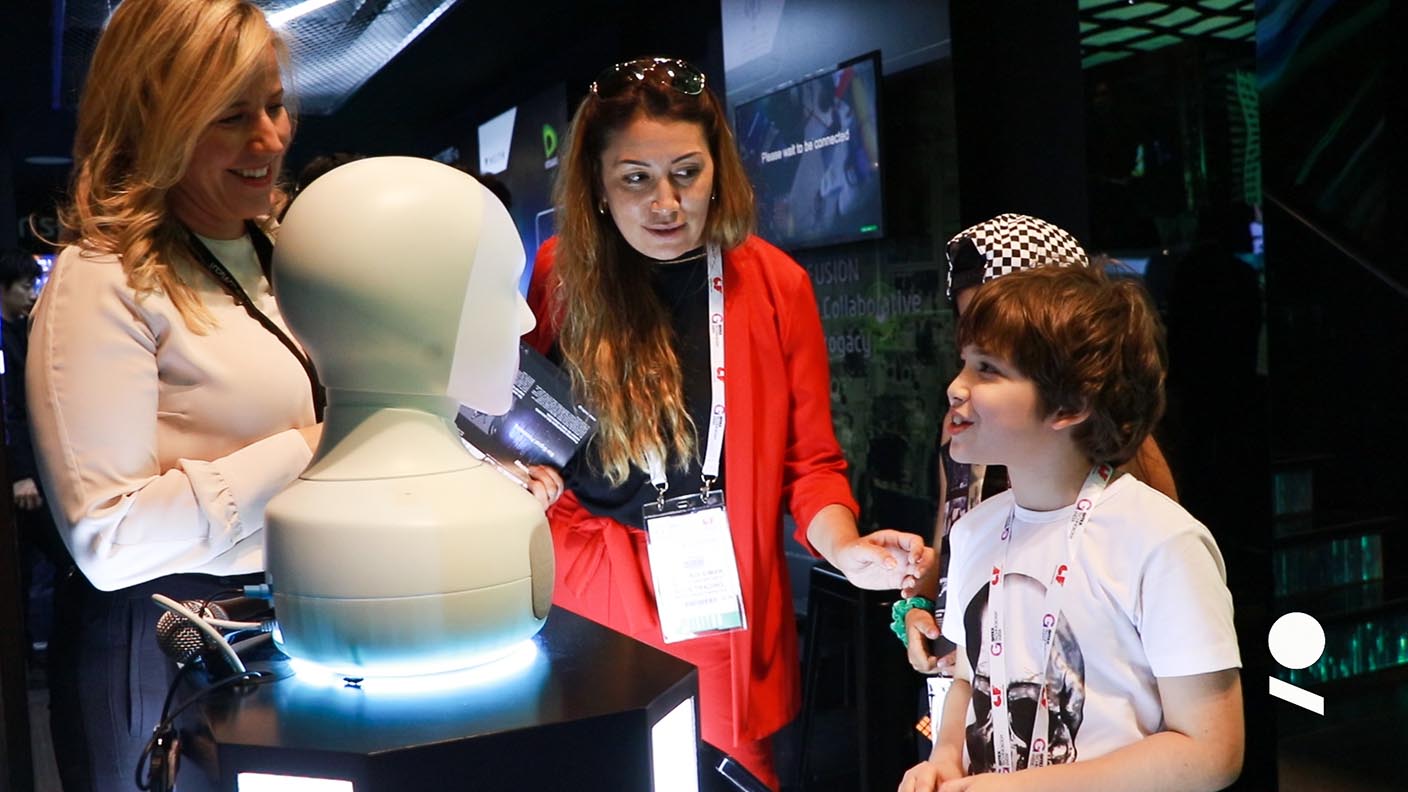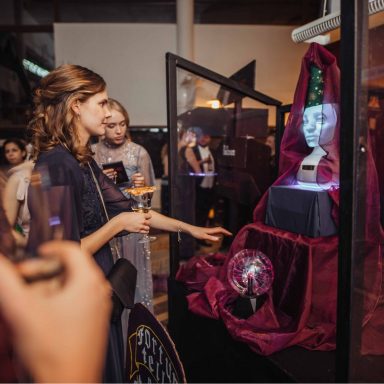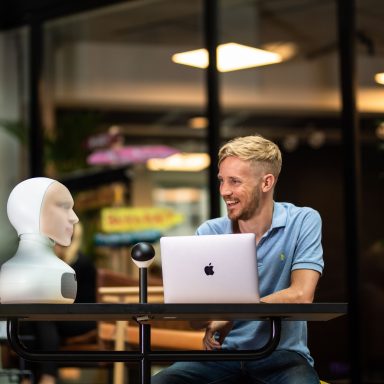Variants of this way of doing theater have survived to the present day, and was one of the major influences on the work of Dario Fo, the 1997 Nobel Laureate in Literature.
An integral part of this type of theater was a concept called lazzi. And it turns out there might be things that we as social robot interaction designers can learn from applying this to our work!
“Lazzi (/ˈlɑːtsi/; from the Italian lazzo, a joke or witticism) are stock comedic routines that are associated with Commedia dell’arte. Performers, especially those playing the masked Arlecchino, had many examples of this in their repertoire, and would use improvisatory skills to weave them into the plot of dozens of different commedia scenarios. These largely physical sequences could be improvised or preplanned within the performance and were often used to enliven the audience when a scene was dragging, to cover a dropped line or cue, or to delight an expectant audience with the troupe’s specialized lazzi.” (from wikipedia)
A lazzi is an improvised joke or short piece of theater that performers can slip into when needed, and afterwards seamlessly return to the main flow. A lazzi is well rehearsed, and the only improvised aspect is when to use it.
In other words, a lazzi is a planned response to a seemingly unpredictable, random event.
In other words, a lazzi is a planned response to a seemingly unpredictable, random event.
So, what does that have to do with social robotics, we hear you ask? Don’t worry, we will get there soon!
Modern street performers often have hundreds of lazzis ready for different things that can happen during a show. There are a plethora of things that can happen during a street performance; not at every show, but often enough that you want to have a good, planned response to it.
Some of these lazzis are unique and personal, and others have become stock jokes, used by so many performers that everyone has their own version. Some examples could be:
Someone enters the show with a baby carriage.
– Hey, stop pushing that kid around.
A drunkard yells something unintelligible at the performer.
– I’m sorry, I don’t speak alcoholic.
The audience are forced to move out of the way of a truck trying to drive past
– You have to move out of the way. There is a truck driving through, and at the end of this show I will ask you all to put money in my hat. It would be a real tragedy if you get hit by a truck with my money in your pockets 🙂
The lazzis are not necessarily just one-liner jokes. It can be longer bits:
A loud church bell starts ringing during the show. It is disrupting.
Gong…
Gong…
The magician picks up their magic wand
Gong…
Points the wand at the church bell and shouts
-Shut up!
Gong…
Gong…
-Wait, I held it the wrong way around
The magician turns the wand 180 degrees in their hands
Gong…
Gong…
Again points the wand at the bell.
– I said shut up!
…
…
The bell is quiet. The magician looks in surprise at the wand. Then puts it down onto the table with a bit of fear. The show continues.
(If you are wondering how this lazzi can be possible… the magician knows it is 7 o clock).
So what does that have to do with social robotics?
In a robot interaction, things will happen that have not been planned for.
These can be phrases that are said by the user or other behavior that the robot is detecting. You can start building up a little library of lazzis to handle the more common situations. Some of them might even be used in completely different interactions as well since they might have more to do with the concept of talking with a social robot than with the conversation itself. I have a little library of lazzis like that for myself where the robot can tell a joke, or give a compliment, or answer the “how are you”-question in a complex and interesting way.

Maybe users sometimes suddenly depart from the conversation to ask “How old are you”. The robot cannot just ignore that without ‘dying’ (a concept from the art puppetry where the robot loses the illusion of aliveness and turns into just dead matter). If this happens semi-regularly it is worth it to create a well thought out response. Our lazzi can divert from the main conversational path, deal with the situation at hand, and then lead back to the main path.
Imagine this situation: a conversation is ongoing, and a second user approaches the robot. A lazzi is triggered where the Furhat looks the second user in the eye and says:
“Hello there. I will be able to speak with you as soon as I have finished this conversation with Natalie. It will only be a moment, at least in the cosmic sense.”
A user looks in closely at the furhat. A lazzi is triggered:
“Not too close buddy! You have to keep some distance, I am afraid of viruses.”
Among magicians there is a saying: Making a sandwich appear can be a good magic trick. But if someone says:
“I’m hungry”,
and you make a sandwich appear – that is a miracle!
Do not underestimate putting some time into creating responses to things that might only happen in one out fifty interactions, if it means that one out of fifty times the interaction will be amazing. As you add on more and more lazzis to your repertoire, you may get to a point where you can use three or four different ones in every interaction.
In other words, robot lazzis can be used to deal with situations where a response is required to maintain the “magic” of the conversation. Lazzis can also be used to make conversations more dynamic and humorous, and expand the sense of life in the robot.
I was a games programmer in the distant past and have two decades of experience as a performer on stage and creator of magic effects – often using robots. Nowadays as a social robot interaction developer, I’m curious to learn more about what these worlds can learn from each other.
Do you find the concept of lazzis to be useful in social robot interaction design? Or perhaps in other areas, such as game design? Do you have a lazzi that you are using?
Let me know, here’s my Twitter!



